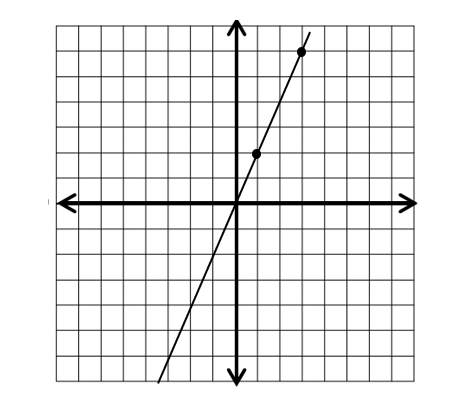How to Write Linear Equations from Graphs
Welcome to our comprehensive step-by-step guide on how to write linear equations from graphs. This process is an integral part of mathematics, particularly in algebra, geometry, and calculus. Understanding how to write linear equations from graphs is vital for numerous practical applications in science, engineering, and economics.

A linear equation represents a straight line on a two-dimensional plane, typically illustrated on a graph with the \(x\) and \(y\)-axes. A standard form of a linear equation is \(y = mx + b\), where ‘\(m\)’ stands for the slope and ‘\(b\)’ is the \(y\)-intercept.
A graph is a visual representation of a mathematical function or a set of data. The horizontal axis, often labeled ‘\(x\),’ and the vertical axis, labeled ‘\(y\),’ intersect at a point called the origin.
A Step-by-step Guide to Writing Linear Equations from Graphs
Here’s a step-by-step guide on Write Linear Equations from Graphs:
Step 1: Identify the Slope and the Y-Intercept
In a linear equation, the slope (‘\(m\)’) is the measure of the tilt of the line – a ratio of vertical change (the rise) to horizontal change (the run). On the other hand, the \(y\)-intercept (‘\(b\)’) is the point where the line intersects the \(y\)-axis. It represents the value of ‘\(y\)’ when ‘\(x\)’ equals zero.
Step 2: Determine the Slope
The slope can be determined from the graph by selecting any two points on the line. The formula for finding the slope is \(m =\frac{(y_2 – y_1)}{(x_2 – x_1)}\). This formula represents the ratio of the difference in ‘\(y\)’ coordinates (vertical change) to the difference in ‘\(x\)’ coordinates (horizontal change).
Step 3: Determine the Y-Intercept
The \(y\)-intercept can be identified visually on the graph as the point where the line crosses the \(y\)-axis. The coordinate of this point always has ‘\(x\)’ equal to zero.
Step 4: Write the Linear Equation
Now, with the slope (‘\(m\)’) and \(y\)-intercept (‘\(b\)’) identified, you can write the linear equation. Substitute these values into the equation \(y = mx + b\).
Practical Example: Writing a Linear Equation from a Graph

Consider a graph with two points \(A(1,2)\) and \(B(3,6)\). The slope of the line \(AB\) is \(m = \frac{(6-2)}{(3-1) }= 2\). The line intersects the \(y\)-axis at \((0,0)\), which means the \(y\)-intercept \(b = 0\). Therefore, the linear equation for this line would be \(y = 2x + 0\) or simply \(y = 2x\).
Conclusion
Understanding how to write linear equations from graphs is a skill with many practical applications. It aids in understanding the behavior of mathematical functions and provides a solid foundation for exploring more complex areas of mathematics. Whether you’re a student, a professional, or just curious about math, mastering this skill can open the door to a greater understanding of the world around us.
Remember, the key to mastering any complex concept is practice. We hope this guide has provided you with the confidence and understanding to interpret graphs and write linear equations accurately.
Related to This Article
More math articles
- Best Math Websites for Students
- 5th Grade OAA Math Worksheets: FREE & Printable
- Quadratic Function
- Island Exploration: How to Unearth Side Lengths and Angle Measures of Similar Figures
- How to Graph Functions
- PSAT 10 Math Formulas
- Best Online Math Tutoring Devices
- Full-Length 8th Grade Common Core Math Practice Test
- How to Estimate Negative and Positive Square Roots
- 6th Grade FSA Math Worksheets: FREE & Printable

























What people say about "How to Write Linear Equations from Graphs - Effortless Math: We Help Students Learn to LOVE Mathematics"?
No one replied yet.